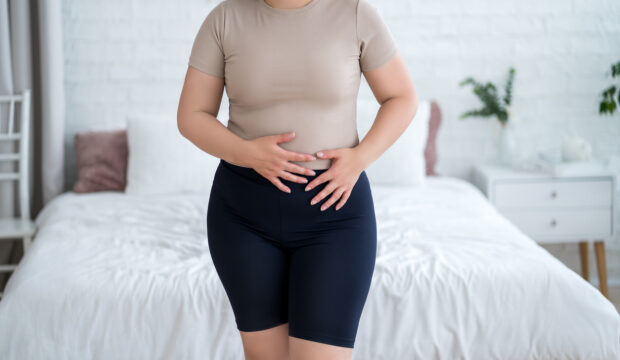Introduction
Microplastics (MP) and
Nanoplastics (NP) refer to tiny plastic particles
that can easily enter our bodies through everyday exposure
in food, water, and even the air we breathe.
Recent studies suggest that these
“micro and nano plastic (MNP) particles”
may act as endocrine disruptors and potentially
increase the risk of obesity and metabolic disorders.
In this article, we will explore the basics of MNPs,
their potential effects on the endocrine system,
the latest research findings, and practical steps to
reduce daily exposure.
What Are MNPs? Links to Obesity Concerns
◆ Definition and Sources
Microplastics (MP) are particles
less than 5 mm in size, while
Nanoplastics (NP) are even smaller
on the nanometer scale. They can be
secondary microplastics
formed by the breakdown of larger plastic waste,
or primary microplastics manufactured
deliberately at tiny sizes (e.g., microbeads, resin pellets).
Because plastic takes decades to degrade and
breaks into smaller pieces over time,
microplastic pollution has become pervasive
in oceans, soil, and food sources.
Microplastics have been detected in marine products, salt, vegetables, fruits, and even indoor dust. Thus, humans can ingest MNPs orally through food and water, or inhale them from the air.
◆ The Obesity Angle
One major concern is that MNPs may act as “obesogens”—chemicals that promote weight gain. Research suggests both plastic additives and the plastic particles themselves can interact with hormone receptors, potentially increasing fat cell proliferation and disrupting metabolic function.
In animal experiments, mice on a high-fat diet exposed to microplastics showed worsening fatty liver and insulin resistance. These findings raise alarms that MNPs may be a hidden factor in obesity and related lifestyle diseases.
Mechanism of Endocrine Disruption
Plastics often contain
Bisphenol A (BPA) and
Phthalates, which are known
endocrine-disrupting chemicals (EDCs).
These substances can mimic hormonal activity,
altering metabolism and reproductive hormones
by binding to specific receptors.
Moreover, the tiny particles themselves
can trigger chronic inflammation
and oxidative stress at the cellular level,
potentially contributing to
obesity and diabetes.
Some recent studies show that inhalation of nylon nanoplastics in rats reduced sex hormone levels and affected vascular function. Scientists suspect these disruptions could promote obesity or reduce fertility.
Latest Research & International Developments
◆ WHO’s Initial View
In 2019, the World Health Organization (WHO) released
a report suggesting the health risks of microplastics
in drinking water are likely low. However, it emphasized
the need for further research on
smaller particles and long-term impacts.
Building on subsequent data, the
Minderoo-Monaco Commission
in 2023 highlighted that chemicals added to plastics
could lead to disease, disability, and early death,
specifically warning about increased risks of
infertility, obesity, and cancer.
◆ Detection in Human Blood and Breast Milk
In recent years, researchers have detected microplastics in human blood and breast milk, confirming that MNPs can enter and circulate within the human body. These discoveries raise particular concern for pregnant women, infants, and broader public health, calling for stronger regulations and precautionary measures.
Practical Steps to Reduce MNP Exposure
◆ Cut Down on Single-Use Plastics
- Avoid plastic bags, bottles, and containers; opt for reusable options
- Reduce bottled water intake by using tap water with a proper filter or a reusable metal bottle
◆ Rethink Kitchenware
- Refrain from microwaving food in plastic containers (use heat-resistant glass or ceramic)
- Store fatty foods in glass rather than plastic to minimize leaching
◆ House Dust & Clothing
- Use damp cloths or HEPA-filter vacuum cleaners to remove microplastic-laden dust
- When washing synthetic fabrics, use filter bags designed to capture microfibers and reduce particle runoff
Additionally, avoiding products with plastic microbeads (in facial scrubs, etc.) and steering clear of plastic mesh tea bags can help lower MNP intake in daily life.
Conclusion
Micro and nano plastic particles (MNPs) have been called
“invisible chemical time bombs”
for their potential to disrupt hormones and
metabolic pathways. With evidence suggesting
higher obesity risks and
worsening cardiometabolic conditions,
it’s clear that rethinking our reliance on plastic
is both an environmental and personal health priority.
Beyond individual actions, global treaties and
government regulations are crucial. By supporting policies
and initiatives that reduce plastic production and improve
waste management, we can protect ourselves and future
generations from the harm of plastic pollution.
References
- Microplastics are inside us all. What does that mean for our health? | AAMC
- A review of the endocrine disrupting effects of micro and nano plastic and their associated chemicals in mammals – PMC
- Assessing the contribution of plastic-associated obesogenic compounds to cardiometabolic diseases – PMC
- Kyoto University: Oral Intake of Microplastics Worsens Metabolic Disorders Under High-Fat Diet Conditions
- Plastic Particles Themselves, Not Just Chemical Additives, Can Alter Sex Hormones | Rutgers University








Comment